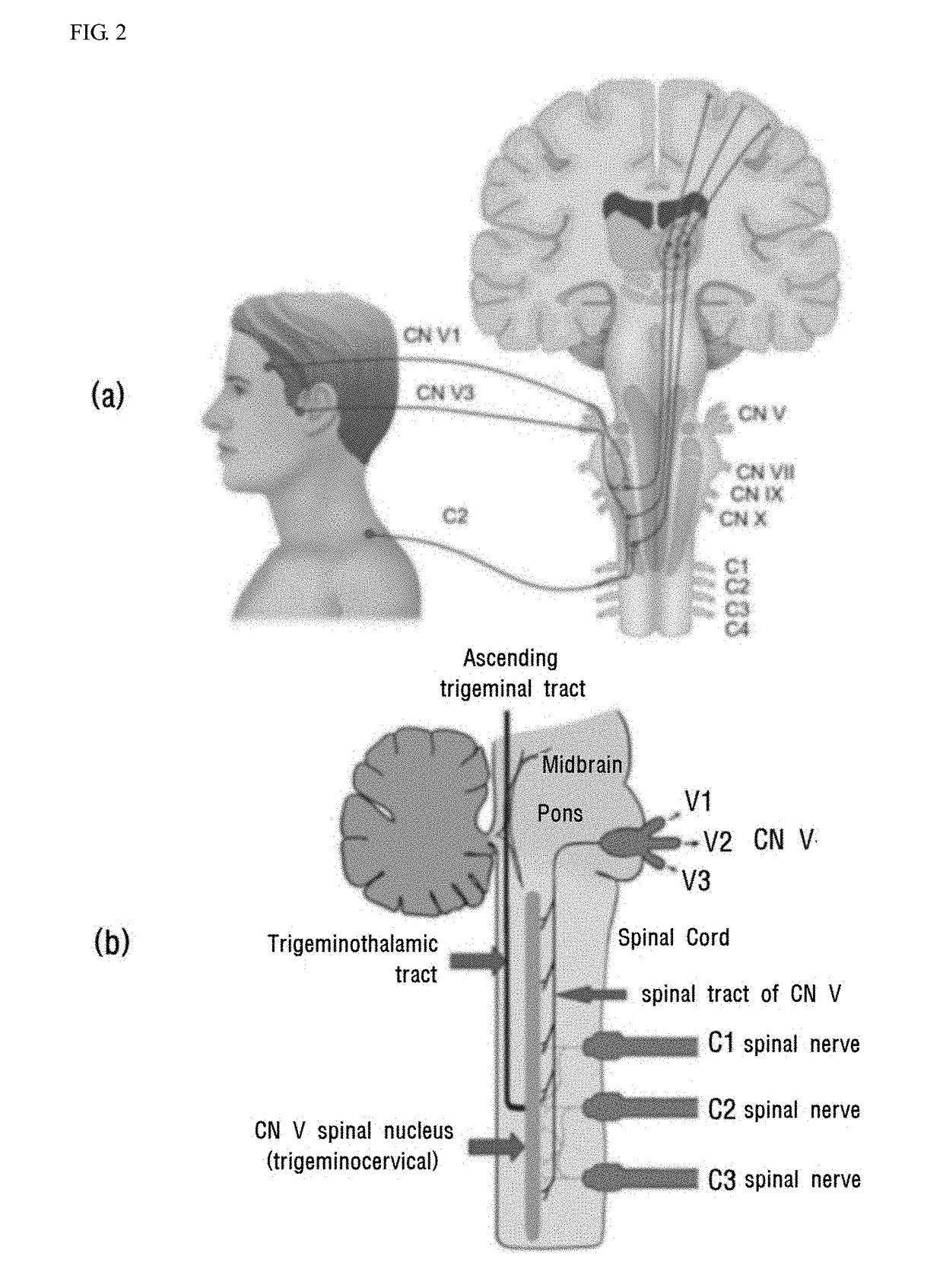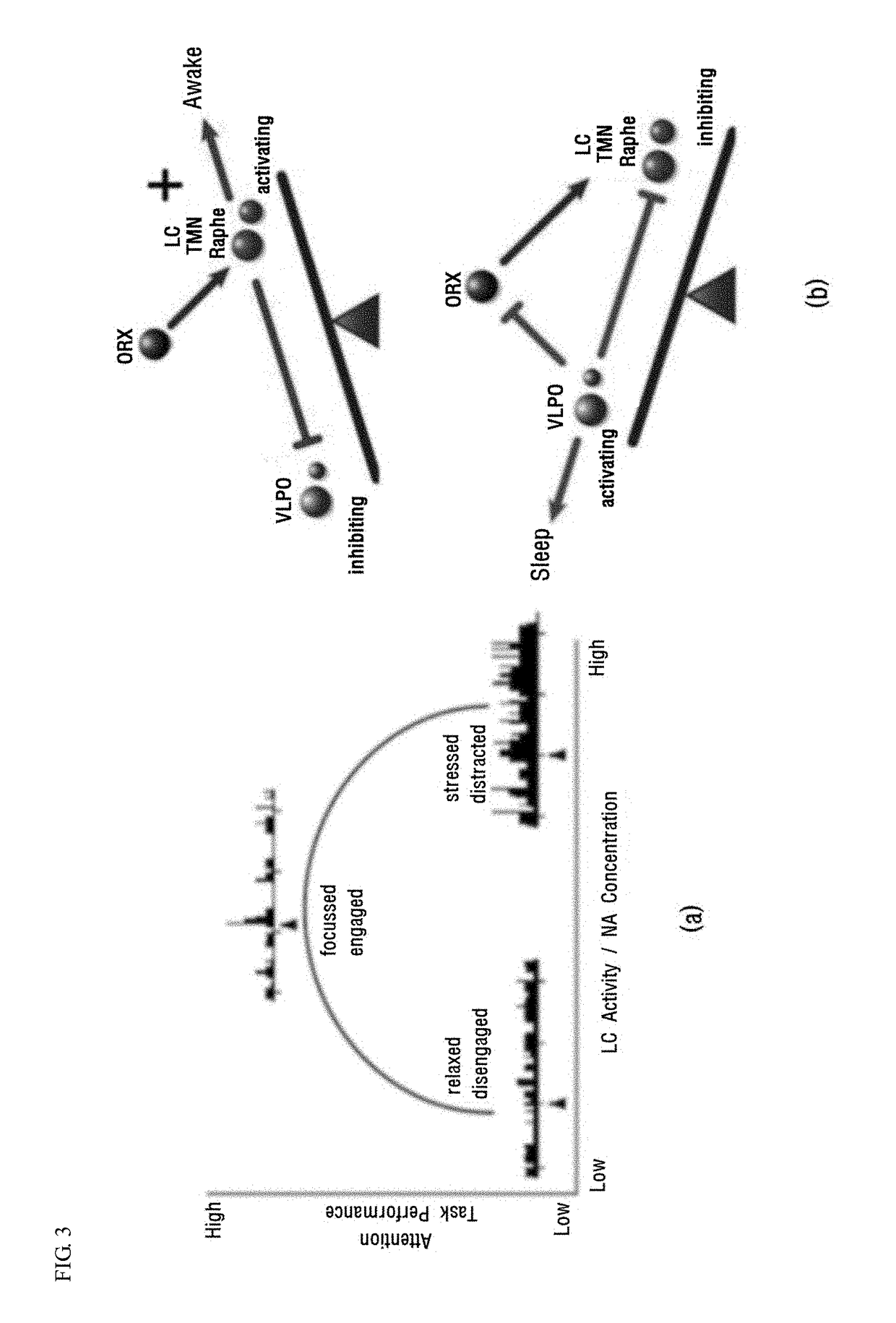Wearable cervical transdermal pulsed electrical stimulation devices and control method of the same
a transdermal pulsed electrical stimulation and wearable technology, applied in the field of non-invasive neuromodulation, can solve the problems of poor performance, high levels of distraction, and less than ideal for neuromodulation and ease of self-comfortable use, and achieve the effects of reducing sympathetic nervous system activity, reducing muscular activation, and reducing heart ra
- Summary
- Abstract
- Description
- Claims
- Application Information
AI Technical Summary
Benefits of technology
Problems solved by technology
Method used
Image
Examples
Embodiment Construction
[0049]Traditional TENS devices operate at a stimulus frequency of about 80 to 130 cycles per second (Hertz; Hz), which is an optimal frequency band for stimulating neuromuscular activity. The invention described herein operates at frequencies from 350-500 Hz with biphasic, charge balanced pulsed waveforms (pulse widths 200-250 microseconds; interpulse intervals 125-375 microseconds). Pulse amplitudes are in the mA range (generally 0.5 to 10 mA pulse amplitude, though higher intensities up to 30 mA may be used in some embodiments.) These device characteristics avoid (or mildly suppress) neuromuscular activation while enabling modulation of afferent sensory and proprioceptive fibers. Likewise, the use of 350-500 Hz pulsed transdermal electrical stimulation (pTES) waveforms with these parameters minimizes or eliminates the activation of pain fibers and pathways, which typically respond up to about 200 Hz. Moreover, the charge balanced nature of the waveform minimizes pH changes known t...
PUM
 Login to View More
Login to View More Abstract
Description
Claims
Application Information
 Login to View More
Login to View More - R&D
- Intellectual Property
- Life Sciences
- Materials
- Tech Scout
- Unparalleled Data Quality
- Higher Quality Content
- 60% Fewer Hallucinations
Browse by: Latest US Patents, China's latest patents, Technical Efficacy Thesaurus, Application Domain, Technology Topic, Popular Technical Reports.
© 2025 PatSnap. All rights reserved.Legal|Privacy policy|Modern Slavery Act Transparency Statement|Sitemap|About US| Contact US: help@patsnap.com



